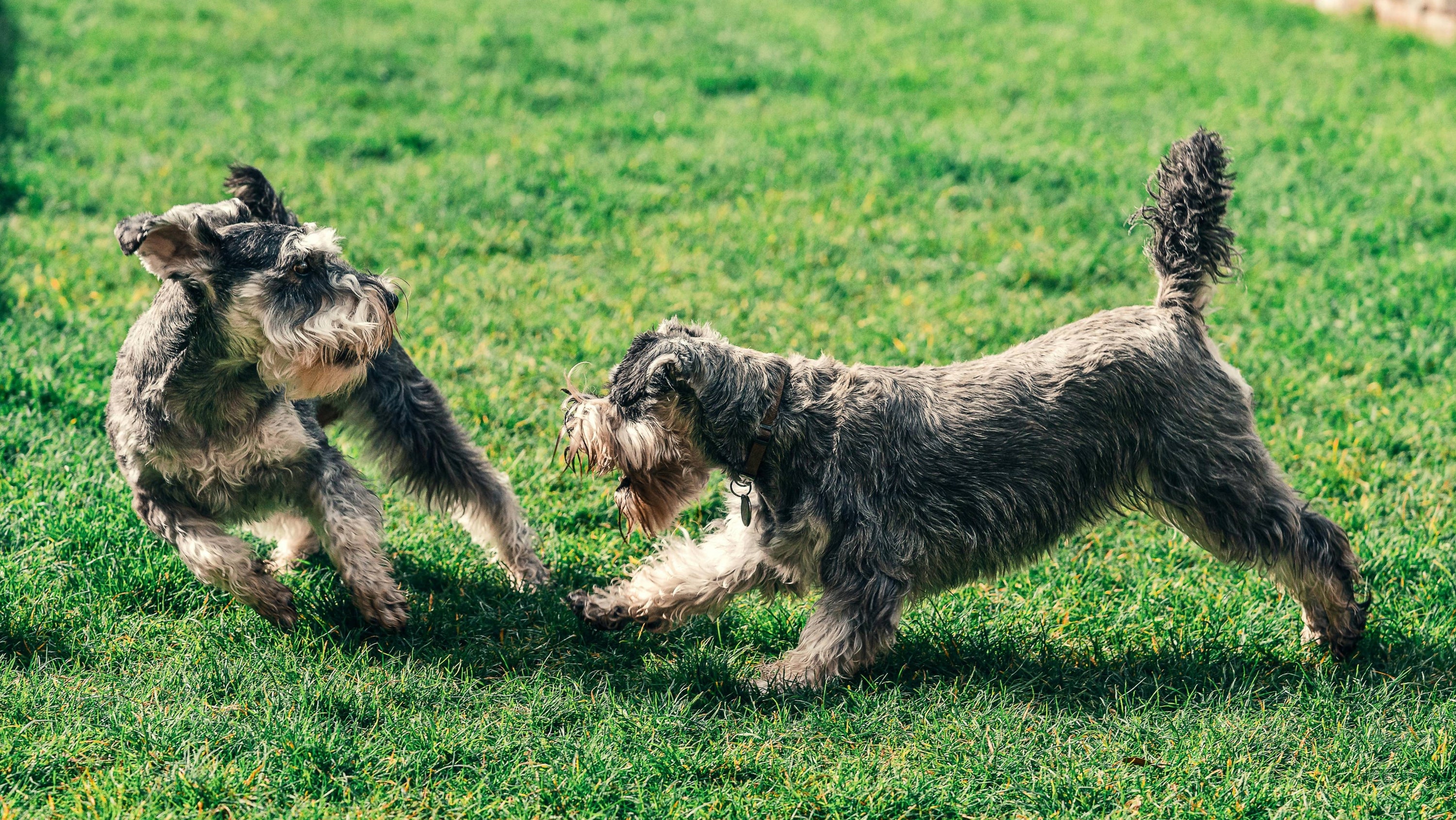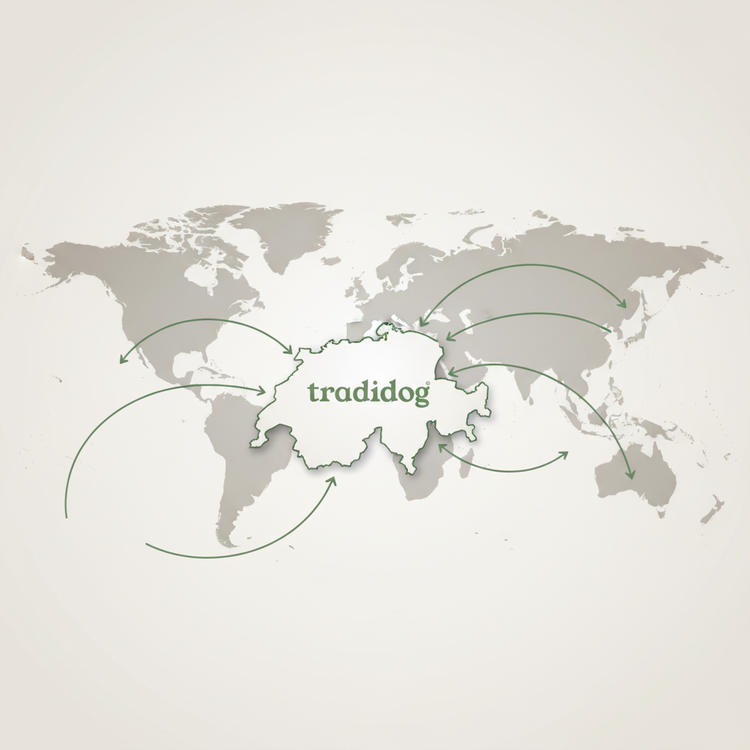
Hair loss in dogs
Hair loss in dogs is a topic that concerns many dog owners and often causes concern. While it's perfectly normal for dogs to lose hair at certain times of the year, excessive or unusual hair loss can indicate health problems. Whether it's seasonal shedding, allergic reactions, or serious skin conditions, understanding the causes and symptoms can help you find the right treatment and care. In this blog post, you'll get an in-depth look at the most common reasons for hair loss in dogs, how to recognize them, and what steps you should take to improve coat health.
1. Reasons for hair loss in dogs
Dogs shed for various reasons related to their natural physiology and adaptations to the environment:
Regulation of body temperature
Shedding: Dogs have a coat that protects them from extreme temperatures. Regular shedding helps remove dead hair and supports temperature regulation. In spring and autumn, shedding can be particularly pronounced in order to adjust to the new temperatures.
Skin health
Skin regeneration: Hair falls out to make room for new growth. This is part of the natural skin and coat regeneration process. The skin renews itself regularly and hair change is part of this process.
Adaptation to the environment
Environmental adaptation: Dogs adapt their coats to their environment. In warmer climates, many dogs have shorter, less dense hair, while dogs in colder climates have thicker, denser coats. Regular shedding helps them adapt to changes in the environment.
Hereditary factors
Breed-specific characteristics: Different dog breeds have different hair types and amounts. Some breeds shed more, others less. These differences are often genetic and depend on the breed's specific coat structure.
health
Diseases and parasites: Frequent or unusual shedding may indicate health problems such as skin diseases, allergies or parasites. In such cases, a veterinarian should be consulted to determine the cause and take appropriate measures.
Shedding is therefore a natural part of coat care and regeneration in dogs, which contributes to maintaining health and adapting to environmental conditions
2. How do you know if hair loss in dogs is natural or caused by illness?
Hair loss in dogs can have both natural and disease-related causes. Here are some signs that can help you differentiate between natural and disease-related hair loss:
Natural hair loss:
Seasonal coat change- Signs: Dogs tend to shed more in spring and fall to adjust to the changing temperatures. This can be recognized by increased shedding during these seasons.
- Behavior: Hair loss is uniform and the skin looks healthy. There are no additional symptoms such as redness or itching.
Normal hair loss patterns
- Signs: Light shedding that occurs at regular intervals is often normal. The coat may shed old or damaged hairs, which are replaced by new ones.
- Behavior: Hair loss is uniform and not pronounced or localized.
Hair loss due to illness:
Patchy hair loss
- Signs: Hair loss that is concentrated in certain areas of the body may indicate skin conditions such as ringworm, skin infections or allergies.
- Behavior: The affected areas are often red, scaly or inflamed. The dog may also scratch or lick itself frequently.
Additional symptoms
- Signs: If hair loss is accompanied by other symptoms such as itching, redness, dandruff, hair loss in larger areas, unpleasant odor or skin irritation, this may indicate health problems.
- Behavior: The dog shows discomfort, changes behavior, or shows signs of pain.
Changes in the skin
- Signs: Dry, flaky, red or inflamed skin can indicate allergies, skin infections or parasite infestation.
- Behavior: The skin looks abnormal and the dog shows symptoms such as scratching or biting.
Sudden or excessive hair loss
- Signs: Sudden or excessive hair loss without a seasonal explanation or additional symptoms could indicate health problems such as hormonal disorders or autoimmune diseases.
- Behavior: Hair loss is significant and occurs rapidly or in large amounts.
3. 5 small dog breeds that shed little hair
Just moved into your new apartment? Everything is tidy and clean. Then your four-legged friend comes and the apartment is filled with hair. Not necessarily. Some small dog breeds shed little or almost none, which makes them a good choice for people with allergies or for those who want to keep the effort of grooming to a minimum. Here we show you 5 well-known breeds that shed little or no hair:
Yorkshire Terriers
- Hair: Little
- The Yorkshire Terrier has a hair-like coat that hardly sheds, but requires regular grooming and brushing to prevent matting.
Shih Tzu
- Hair: Little
- The Shih Tzu's long, silky coat sheds little but needs frequent brushing to keep it well-groomed.
Poodle (Toy Poodle or Toy Poodle)
- Hair: Hardly
- The poodle is a hypoallergenic dog (causes fewer allergic reactions) because its curly coat sheds very little. However, it does need to be trimmed and brushed regularly.
French Bulldog
- Hair: Little, but seasonal
- The French Bulldog sheds little overall, but loses a little more hair during the shedding season.
Maltese
- Hair: Very little
- Maltese have a long, flowing coat that sheds very little, but like other long-haired breeds, requires regular grooming.

4. Small dogs that shed more hair
We at Tradidog are dog lovers and experts in food additives and of course do not want to discriminate against any dog breed. That is why we show you 3 small and well-known dog breeds below that have a higher hair loss. Despite hair loss, these four-legged friends are absolutely adorable and recommended for purchase:
dachshund
- Hair: Medium
- The Dachshund has different shedding rates depending on the coat type (smooth, long-haired or wiry). Smooth-haired Dachshunds shed less hair, while long-haired and wiry Dachshunds shed more seasonally. Regular brushing helps remove loose hair and keep the coat in good condition.
pug
- Hair: Medium to heavy
- The Pug has a short, dense coat that sheds continuously. Shedding can be particularly significant during the shedding season in spring and fall. Daily brushing helps reduce the amount of hair shed around the home and keeps the coat clean and healthy.
Jack Russell Terrier
- Hair: Medium
- The Jack Russell Terrier has different shedding patterns depending on the coat type (smooth, rough or wiry). Smooth-haired Jack Russells shed less hair, while rough-haired varieties shed a little more seasonally. Regular brushing helps to maintain the coat and control loose hairs

Conclusion
Hair loss in dogs is a natural part of their shedding process, but it can also indicate health problems. While seasonal shedding and occasional shedding are normal occurrences, you should carefully monitor excessive or irregular hair loss, especially if it is accompanied by other symptoms such as skin irritation or discomfort. Regular grooming and knowing your dog's natural shedding patterns will help you identify potential problems early. If you notice signs of abnormal hair loss or additional symptoms, we recommend consulting a veterinarian. With preventative care and timely medical evaluation, you can ensure that your four-legged friend stays healthy and happy.
Tradidog motto: Whether they shed or not, a dog at home is a must!
Share

